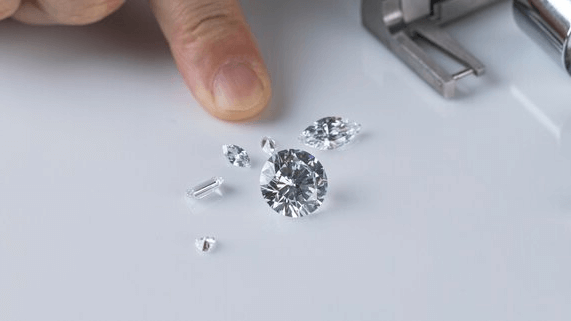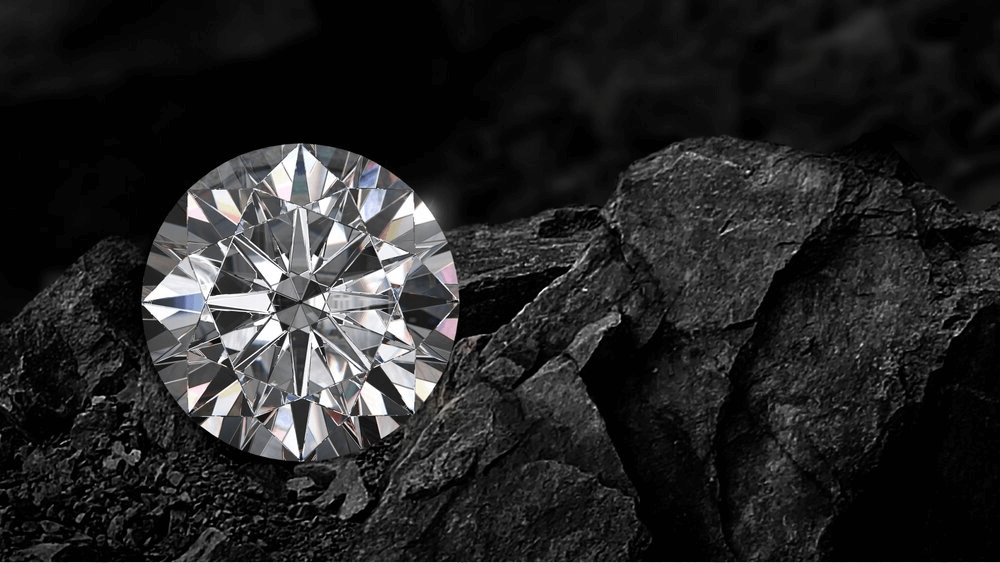The Shocking Truth About Russia’s Diamonds Mines

By Gary A.

Edited by Olivia H.
Published Aug 18, 2024
Edited on Mar 31, 2025
Russian diamonds, renowned for their unmatched clarity and brilliance, have carved a unique niche in the global gemstone market. Discover in this guide how these exquisite gems from the icy depths of Yakutia are shaping the future of the diamond industry.

- 7 Quick Tips for Buying a Diamond Engagement Ring and Examining Russian Diamond Mines
- Introduction to Russian Diamond Mines
- Russia’s Production Trends and Global Impact
- A Brief History of the Russian Diamond Mining Industry
- The Challenges Faced by the Russian Diamond Industry
- ALROSA: The Driving Force Behind Russian Diamonds
- The Ethical Side of Russian Diamond Mining
- Our Expert Take
- 7 FAQs
Before we dive deeper into the specifics of Examining Russian Diamond, here are some practical tips to help guide your decision-making process.
7 Quick Tips for Buying a Diamond Engagement Ring and Examining Russian Diamond Mines
- Tip 1: Understand the Origin: Research the specific characteristics of diamonds mined in Russia, particularly those from the famous Mir mine. Russian diamonds are often known for their quality, but it’s important to understand the unique aspects such as color, clarity, and cut that distinguish Russian diamonds from others.
- Tip 2: Check for Kimberley Process Certification: Ensure that the diamond you are considering is Kimberley Process Certified. This is crucial for Russian diamonds to guarantee they are conflict-free. The Kimberley Process certification ensures that the diamonds are mined and shipped in a humane, ethical manner.
- Tip 3: Evaluate the Cut and Craftsmanship: Pay close attention to the cut of the diamond. Russian diamonds are often well-cut, but it’s essential to examine the craftsmanship. A well-cut diamond will have better brilliance and clarity, which are pivotal in determining its value and beauty.
- Tip 4: Assess the Diamond’s History and Journey: Enquire about the diamond’s journey from mine to market. Understanding its provenance can provide insights into its quality and authenticity. Russian diamonds, especially those from significant mines like Mir, often have a traceable and documented journey.
- Tip 5: Consider the Environmental Impact: Investigate the environmental practices of the Russian diamond mines. Sustainable and eco-friendly mining practices are vital, and understanding the mine’s approach to environmental conservation can add to the value of your purchase.
- Tip 6: Analyze Market Trends and Pricing: Stay informed about the current market trends and pricing specifically for Russian diamonds. The market for diamonds from Russia can fluctuate, so having up-to-date information will help in making a cost-effective and informed decision.
- Tip 7: Explore Rarity and Unique Features: Look for unique features or rarity factors in Russian diamonds. Certain mines in Russia are known for producing rare types of diamonds, which can add a unique appeal and value to your engagement ring.
Now that you’ve got these practical tips, use Jeweler AI below to find the perfect engagement ring that suits your style and budget:
Introduction to Russian Diamond Mines
Russia is the largest country in the world – significantly larger than its runner-up, Canada, and comprising more than 10% of the world’s landmass. Within its borders, you will find some incredible landscapes – environments that stand among the most wild and most ferocious on the planet. From the white tundra to the frozen forests of Siberia.
Beyond the rugged beauty of its sprawling landscapes, Russia also represents the most bounteous areas of the diamond world, producing millions of carats worth of diamonds each and every year. The country produces tens of millions worth of carats each and every year – millions more than Africa’s largest producers like Botswana and South Africa.
Russia’s Production Trends and Global Impact
Interestingly, however, the overwhelming majority of diamond mining in Russia takes place in one, relatively small area known as the Yakutia region – also known as the Republic of Sakha – in the Russian Far East. We say relatively small because, in reality, the Yakutia region is larger than many countries, covering more than 3 million km2. But compared with the immense sprawl of Russia – and its population – it represents just one part of a much bigger whole.
But, whether you think of it as dauntingly large or just a small piece of a larger whole, the fact remains that this corner of Russia holds unparalleled significance for the global diamond industry – and vice versa. With great swathes of Yakutia’s modest population involved in the production and exportation of diamonds, these rough stones represent a vital source of livelihood for many, many Russians.
A Brief History of the Russian Diamond Mining Industry
Despite the fact that diamonds are billions of years in the making, commercial diamond mining in Russia only began in the mid-century – less than a hundred years ago. Now, however, Yakutia accounts for around a quarter of all diamonds mined in the world, thanks to the area being rich in kimberlite ore.
Kimberlite ore is a crumbly, igneous rock that can contain high levels of rough diamond. It is found in volcanic ‘pipes’ – funnels formed by eruptions deep underground, that widen as they reach close to the surface.
The first kimberlite ore in Yakutia was found in the 1950s – and, from that point on, it became a case of establishing the vast infrastructure needed for producing such a high level of output in parts of the country that, until that point, were barely inhabited.
These days, diamonds are found in these kimberlite mines as well as many alluvial deposits (where rough diamonds are deposited on riverbeds). The region has produced some remarkable diamonds over the years, like the ‘Matryoshka” double diamond (the first of its kind), and the 14.83 carat Spirit of the Rose diamond, which made headlines in 2020 when it sold for $26.6 million.
But, more than that, the area is now responsible for around a quarter of the world’s diamond output, and a major source for many of the world’s most prominent jewelry companies.
As with any of the world’s diamond sources, we need to be able to trust that measures are in place to ensure that consumers are not investing in diamonds mined by oppressed or exploited workers and that both the communities and surrounding environment are protected by sustainable efforts.
Mirny: The Heartbeat of Russia’s Diamond Industry
The Mir Mine was discovered in the 1950s and, since then, has represented the very center of Russia’s diamond industry.
Its significance extends globally, supplying major jewelry companies. Mirny’s prominence underscores Russia’s pivotal role in the diamond trade, with ALROSA spearheading ethical practices, ensuring sustainability, and fostering community development in this vital sector.
The Challenges Faced by the Russian Diamond Industry
It’s no secret that diamond mining is a highly intensive process. Even when mines deploy the most sophisticated machinery and techniques they have at their disposal, the fact remains that kimberlite ore is often buried within the layers of the earth and that the only way to access it is to shift countless metric tons of earth out of the way.
From Siberian Depths to Global Markets
In Russia’s Far East, much of that ground is frozen – or even buried under a layer of snow and ice – except during its brief summers, when temperatures climb uncomfortably high. It requires considerable manpower and exhaustive efforts. Mines can prove bountiful for decades, and ensuring output remains high means working round the clock, in some pretty harsh conditions.
If you’ve read our guide to ethical diamonds already, you’ll know that this makes miners vulnerable to exploitation – unreasonable conditions engineered to ensure the highest possible output, with the least effort given to ensuring the safety or welfare of their workers. This can happen anywhere, particularly in the case of remote mines where workers have few options, and the companies in charge of them are not under constant scrutiny from the industry.

ALROSA: The Driving Force Behind Russian Diamonds
These days, however, around 95% of Russia’s diamond production is led by ALROSA, a mining group founded in 1992. The group is there to ensure that Russia’s diamond output meets some rigorous standards for ethics and sustainability, in order to ensure that it can continue to represent a strong source of GDP.
Sustainable Mining: More Than Just Diamonds
In 2017, ALROSA became a certified member of the Responsible Jewellery Council, which keeps an incredibly close eye on its members’ commitment to their Code of Practices for sustainability and human rights. By 2019, the RJC’s Standards Committee featured representation from ALROSA.
This is an important certification for ALROSA, as it offers third-party confirmation that Russian diamonds are meeting some rigorous standards and that Russia’s keen influence over the global diamond market does not represent the dark cloud that it easily could.
They also talk openly about their own efforts not only to pay their employees above the national average wage but also to give back to local communities. Furthermore, they have collaborated with mining group De Beers on utilizing blockchain within the diamond industry, as a way of ensuring traceability is able to be made watertight in the years to come…
The Ethical Side of Russian Diamond Mining
Over the past three decades or so, ensuring that the global diamond industry is able to meet certain standards for ethics has not always proven easy. Traceability is a major issue, particularly when so many regulated and unregulated mines operate over such vast expanses of land, and rough diamonds are entering the market from every conceivable angle.
The fact that ALROSA is responsible for so much of Russia’s diamond output ensures a very high level of traceability. Their standards for ethics and integrity meet with those held by pivotal organizations, such as the RJC, and provide a strong assurance about the background of diamonds being sourced from their mines.
While the conditions in Yakutia are very different to the conditions found in Africa’s diamond producing countries, the outcomes of poor standards of health and safety can be the same. Firm regulations need to be in place, particularly in such remote regions.
This is why ALROSA is so pivotal for the Russian diamond industry. It has funded the creation of roads, hospitals, sporting and leisure facilities, and vital infrastructure for those living in Yakutia. In 2017, for instance, Diamonds Do Good reported on the mining groups’ donation of $4 million to schools – part of a total $10 billion reported to have been ‘given back’ by ALROSA.
Their work also extends to the environment, which can easily be harmed by large-scale mining practices. They have made efforts to preserve rare wildlife in the area, including the reindeer. Thanks to the introduction of Living Diamonds Park, which supports the migration patterns of Siberia’s reindeer, proactive steps are being taken to eventually see these animals removed from the vulnerable species list.
How Russia Upholds the Kimberley Process
In 2017, the mining group brought more than 500 initiatives to fruition, with the majority of those initiatives focused on the Yakutia region, where so many of its employees (and their families) reside. It has also proven indispensable in the Russian government’s ongoing work to ensure that the country meets the requirements of the Kimberley Process Certification Scheme, having been a member since 2003.
Russia’s diamond industry is set to continue supporting a large portion of global demand well into the future and to continue providing a source of income and community support throughout the country.
At WillYou.com, we are highly committed to equipping our readers with the knowledge and understanding they need to make an informed decision, particularly when it comes to making sure that the diamond they select is one that comes from a safe, fair, and beneficial background. This means selecting a reputable source for diamonds – one that is open about every stage in the process, from mining to polishing.
Our Expert Take
As with so many of the diamond producing countries we have looked at already on WillYou.com, Russia has worked to establish and maintain a robust and resilient diamond industry – one that looks to conserve the very environment that sees these diamonds brought to light for the first time.
As a result of this work, Russia’s diamond mining industry holds incredible significance for the diamond world – as well as the communities it touches. This means that not only is it responsible for so many of the diamonds that enter the global market, but it is also responsible for the people and places that are most impacted by this industry.
7 FAQs
- Q1: What Makes Russian Diamonds Unique?
- A: Russian diamonds, especially from mines like Mir, are renowned for their high quality, exceptional clarity, and brilliant cuts. Their distinctiveness lies in the rigorous standards of mining and craftsmanship in Russia.
- Q2: Are Russian Diamonds Conflict-Free?
- A: Yes, Russian diamonds are generally conflict-free, adhering to the Kimberley Process Certification, which ensures that the diamonds are ethically mined and sold.
- Q3: How Does the Kimberley Process Work in Russia?
- A: The Kimberley Process in Russia involves strict monitoring and certification to ensure that diamonds are conflict-free. This system tracks diamonds from mine to market to prevent the sale of illegal or conflict diamonds.
- Q4: Can I Trace the Origin of a Russian Diamond?
- A: Yes, many Russian diamonds can be traced back to their origin, especially those from major mines like Mir. Documentation and certification often accompany such diamonds, providing their history and journey.
- Q5: Are Russian Diamond Mines Environmentally Sustainable?
- A: Many Russian diamond mines, including ALROSA’s operations, have adopted sustainable and environmentally friendly mining practices. However, it’s advisable to research individual mines for their specific environmental policies.
- Q6: How Do Russian Diamonds Compare in Price to Others?
- A: Russian diamonds are competitively priced, often offering high quality at a good value. Prices can vary based on the diamond’s specific characteristics and market demand.
- Q7: What Should I Look for When Buying a Russian Diamond?
- A: Focus on the diamond’s cut, clarity, color, and carat weight. Also, verify its Kimberley Process certification and inquire about its environmental and ethical sourcing practices.
Dive into the brilliance of Russian diamonds with Jeweler AI. Experience a tailored journey through the world’s most exquisite gems.
FOLLOW-UP GUIDE SERIES








